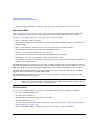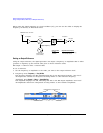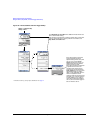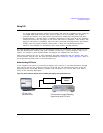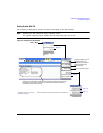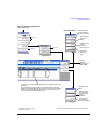
114 Agilent N5161A/62A/81A/82A/83A MXG Signal Generators User’s Guide
Optimizing Performance Preliminary
Using LXI Preliminary
The PC browser clock shows the local civil time using a standard Date/Time representation. If the PC
is connected to a Network Time Protocol (NTP) server (through LAN), then its time will be relatively
accurate. However, because the PC may be in a different time zone or have a different Daylight
Savings Time offset (or both) than the instrument, it is possible for the PC Browser clock to have a
different time than the Instrument's Operating System (OS) clock.
The LXI instrument has two clocks. The instrument's Operating System clock, similar to a PC's
browser clock, shows civil time in a Date/Time format. The second clock is the instrument's PTP
clock. It is this clock that synchronizes to the Master Clock (if one is in the system). Typically, this
PTP clock shows time in elapsed seconds since its epoch.
As you create larger systems by adding more LXI instruments, the total number of system clocks
increases significantly. In addition to instrument clocks, you may have PTP Master clocks and a PTP
GrandMaster clock. Also, you may have one or more Boundary Clocks in your test system. Boundary
Clocks will have both Master and Slave clocks depending on the port.
NOTE The concept of local clock or local time can be confusing depending on your frame of
reference. For example, if you think of yourself in front of the PC, then local is the Browser
clock. If you think of yourself in front of the instrument, then local is the instrument. In
most test systems, the PC and the instrument are located close together. But, in some test
systems they may be located many miles apart, in different timezones, or even across an
ocean. Also note that the SCPI uses local in the context of the instrument OS clock.



